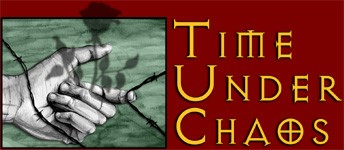
LynchpinsIndex | Time Under Chaos | Creating a Character | Sorcery Power | Spells | Lynchpins Although the core principles of Sorcery remain universal in nature, there are certain aspects that will differ according to the Shadow they are invoked in. These aspects must be compensated for at the time spells are being created or they simply won’t work (or, even worse, will produce the wrong result). Spells are also very specifically oriented. A completed Invisibility spell designed to cloak someone on Shadow Earth, will do nothing at all if cast in Rebma. A Lightning Bolt spell readied for casting in the Courts of Chaos will be a sparkly dud in Castle Amber. A Bind spell designed for Shadow-dwellers is harmless against a Lord of Chaos. A Barrier cast to keep out Pattern energy is transparent to the tendrils of the Logrus. For Shadow-dwellers, this is rarely a problem. They are confined to one Shadow, so they are more attuned to that Shadow’s laws. They also generally know what they will encounter in their Shadow and compensate for that. As long as they aren’t dropped in another Shadow, they should remain quite effective. However, for those of Power, Shadow becomes effectively infinite and they rarely stay in one place. How can one possibly know the laws of every Shadow in existence? How can they hope to prepare for an infinite number of eventualities? The fact is simple: they can’t. For this reason, Sorcerers created a technique by which they could form a basic spell formula and then just fill in certain aspects depending on the situation at the last moment. This technique is referred to as the use of Lynchpins. Lynchpins are added to the base formulaic structure of a spell, defining last-minute conditions that may occur, but leaving out certain, specific details. Typically, these details are very narrow in scope, such as the environment, the type of target, a variation in effect, or the degree of the effect. They usually take the form of words or gestures. When the spell is finally triggered or released (usually out of a spell-rack), the Sorcerer ‘fills in the gaps’ and the spell reacts appropriately. In this fashion, a Sorcerer can use a spell against a Shadow-dweller or an Amberite without having to design a separate spell for both. Most spells already have lynchpins built into them. This is to provide the flexibility normally required for proper usage. After all, who has the time to create seven different Charm spells to cover all their bases? However, more experienced Sorcerers can include additional lynchpins as they initially form the spell. This provides them with even greater versatility when casting. Although lynchpins make stored spells flexible, they have disadvantages. Lynchpins take additional time, increasing the spell’s Base Casting Time. Lynchpins also add time to the unleashing of a spell. The more lynchpins there are, the more opportunity there is for others to interfere in the spell. However, the benefits of having a versatile spell far outweigh having only one spell that works in only one way. The most common lynchpins are discussed below:
|